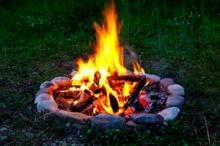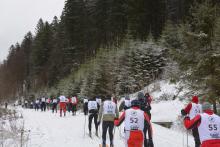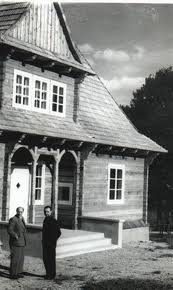 Asset Publisher
Asset Publisher
Polish forests
Poland is in the European lead, while concerning the area of all forests. They cover about 29,2 % of the country territory, and grow within the area of 9,1 million hectares. The overwhelming majority of the forests is state owned, of which almost 7,6 million hectares are managed by the State Forests National Forest Holding..
The number of Polish forest is still growing. The forestation rate of the country has increased from 21 % in 1945 to 29,2 % at the moment. Between 1995 and 2008, the forest area increased by 310 thousand ha. The basis for afforestation works is the "National Programme for Increasing the Forest Cover" (KPZL), assuming an increase of the forestation rate up to 30 % by 2020 and up to 33 % by 2050. Polish forests abound in flora, fauna and fungi. 65 % of the total number of animal species live there.
The forests grow in our country on poor soils, mainly because of the development of the agriculture in previous years. It influences the distribution of the types of the forest sites in Poland. Over 55 % of the forest areas is covered with coniferous forests. In other areas, there are forest sites, mainly the mixed ones. Their small part constitute alder and riparian forests – not more than 3 %.
In the years 1945 – 2011 the area of natural deciduous tree stands within the area of the State Forests National Forest Holding increased from 13 to 28,2 %.
Within the lowlands and uplands the most often occurring tee species is pine. It covers 64,3 % of the forest area of the State Forests National Forest Holding and 57,7 % of private and commune forests. In the mountains the predominant species is European spruce ( in the west) and European spruce with beech (in the east). Domination of pine is the result of carrying on sustainable forest management in the past. Once, the monocultures (crops or cultivations of one species) were the answer to the great demand of industry for wood. Such forests appeared to be quite fragile to climatic factors. They also were often the prey of pests' expansion.
In Polish forests, the share of other tree species, especially deciduous trees have been systematically increasing. The foresters have stepped aside from monocultures – that is why, they try to fit specific species of the forest stand to the natural stand, that would be proper for the given area. Thanks to that, in the years 1945 – 2011, the area of the deciduous tree stands within the lands of the State Forests National Forest Holding increased from 13 to 28,2 %. There occur more and more frequently the following tree species: oaks, ashes, maples, sycamore maples, elms, but also birches, beeches, alders, poplars, hornbeams, aspens, tilias and willows.
Our forests are the most often represented by the forest stands aged 40 to 80 years. The average age of the forest equals 60 years. More and more trees are of big size at the age over 80 years. Since the end of the Second World War, the forests' area has increased up to almost 1,85 million hectares.
Raport o stanie lasów w Polsce 2012
 Asset Publisher
Asset Publisher
Poszukiwania padłych dzików
Poszukiwania padłych dzików
Nadleśnictwo Cisna apeluje o informacje na temat znalezionych padłych dzików.
Afrykański Pomór Świń (ASF) to nieuleczalna, wysoce zakaźna i zaraźliwa, wirusowa choroba świń domowych wszystkich ras oraz dzików.
Głównymi źródłami rozprzestrzeniania się choroby są dziki oraz człowiek. Wirus wykazuje znaczną odporność na działanie czynników środowiskowych. W mrożonym mięsie świń jego przeżywalność wynosi 1000 dni, w mięsie suszonym - 300 dni, w mięsie solonym 182 dni, a w mięsie mielonym 105 dni. We krwi przechowywanej w temperaturze pokojowej zarazek utrzymuje się w stanie zakaźnym przez 10-18 tyg., a w kale - 11 dni. Wirus ASF jest także oporny na wysychanie i gnicie. Na terenie Hiszpanii stwierdzono obecność zakaźnego wirusa w zagrodach, w których wybito zwierzęta 4 miesiące wcześniej, w gnijących zwłokach pozostawionych w temperaturze pokojowej zachował on żywotność przez 18 tygodni, zaś w śledzionie zakopanej w ziemi przez 280 dni. W niskiej temperaturze wirus ASF jest żywotny i zjadliwy przez kilka lat, ciepło natomiast niszczy go relatywnie szybko: w temperaturze 55oC ginie po 45 min., a w temperaturze 60oC po 20-30 minutach.
Po raz pierwszy wirus ASF został stwierdzony i opisany w Kenii w 1921 roku. Na kontynencie europejskim pojawił się w 1957 roku zawleczony z Angoli do Portugali. W Polsce pierwsze przypadki odnotowano w 2014 roku. Najnowsze dane potwierdzają występowanie ASF w Czechach.
Zwalczanie wirusa odbywa się wyłącznie metodami administracyjnymi, poprzez wybijanie stad zakażonych ze strefy zapowietrzonej. Dodatkowo producenci oraz hodowcy świń zobowiązani są do stosowanie bioasekuracji. Masowe padnięcia zwierząt, koszty eradykacji, jak i wypłaty odszkodowań, a przede wszystkim wstrzymaniem obrotu i eksportu świń, wieprzowiny, artykułów żywnościowych wyprodukowanych z mięsa wieprzowego oraz nasienia powodują ogromne straty ekonomiczne dla nich oraz budżetu państwa.
Mino, że wirus ASF jest niegroźny dla człowieka, to jest to uznawany za najgroźniejszą chorobę świń.
Minister Rolnictwa i Rozwoju Wsi oraz Główny Lekarz Weterynarii apelują o zgłaszanie każdego przypadku znalezionego dzika. Minister Środowiska zlecił Dyrektorowi Generalnemu Lasów Państwowych poszukiwanie padłych dzików oraz bieżący monitoring gruntów administrowanych przez Państwowe Gospodarstwo Leśne Lasy Państwowe. W związku z powyższym pracownicy Służby Leśnej wspólnie z członkami Polskiego Związku Łowieckiego oraz pracownikami Zakładów Usług Leśnych będą zbiorowo przeszukiwać drzewostany w miesiącach od sierpnia do listopada 2017 roku oraz od kwietnia do listopada 2018 roku padłych dzików.
Nadleśnictwo Cisna prosi, aby każdy przypadek znalezienia padłego dzika lub jego szczątków na terenach leśnych bezzwłocznie zgłaszać do Nadleśnictwa do pod numerem telefonu: +48 13 468 63 01, mailem: cisna@krosno.lasy.gov.pl lub do P. Łukasz Mokrzyńskiego pod numer telefonu komórkowego 695 390 570, P. Edwarda Wierzbickiego pod numer telefonu komórkowego 608 086 326 (obwód łowiecki 218pk), P. Łukasza Sawińskiego pod numer telefonu komórkowego 695 390 566 (obwód łowiecki 219pk).


 fot. Paweł Fabijański
fot. Paweł Fabijański
 fot. Paweł Fabijański
fot. Paweł Fabijański
 fot. Paweł Fabijański
fot. Paweł Fabijański







